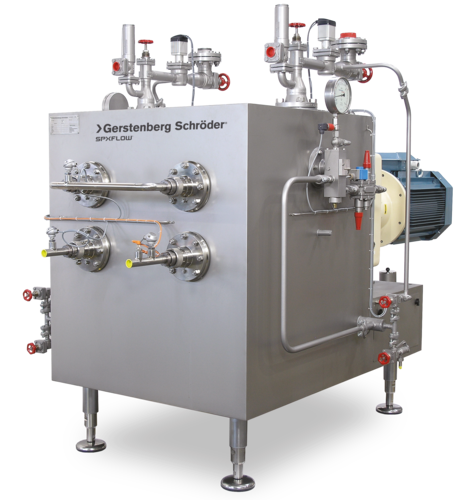STORIES IN THE MAKING
Importance of Replacing Chilling Cylinders in Margarine, Shortening Production

Producing margarine and shortening involves sophisticated machinery and precise equipment. One key component of this machinery is the chilling cylinder within a scraped surface heat exchanger, which plays a pivotal role in shaping the quality and efficiency of the production process. However, what many might overlook is the importance of regularly replacing these chilling cylinders. Let's delve into why this maintenance task is essential and how our solution makers can help.
Managing Wear and Tear
The chilling cylinder faces constant wear and tear during operation. Its primary function is to rapidly cool and solidify the product, which involves continuous contact and scraping. Over time, this repetitive action can lead to abrasion and degradation of the cylinder's surface. By replacing the cylinder periodically, manufacturers can ensure optimal performance and longevity of this critical component.
Ensuring Product Quality
Maintaining the quality of margarine and shortening demands precision in the cooling process. As the chilling cylinder wears down, the risk of inconsistent product quality and texture as well as the risk of unexpected downtime increases. By replacing the cylinder at regular intervals, manufacturers uphold the standards of their products and meet consumer expectations.
Preventing Contamination
The ingredients used in margarine and shortening production can be abrasive or corrosive. The product can potentially get contaminated if the cylinder surface starts to deteriorate. Regular replacement helps mitigate the risk of contamination, ensuring the product remains safe and compliant with food safety regulations.
Optimizing Operational Efficiency
An efficiently functioning heat exchanger is vital for streamlined production. A worn-out chilling cylinder may not provide the necessary level of cooling or scraping action, leading to operational inefficiencies and increased downtime. By replacing the cylinder as part of routine maintenance, manufacturers optimize their production processes and reduce the likelihood of unexpected breakdowns.
Upholding Hygiene Standards
Food safety and hygiene are paramount in food manufacturing. Over time, chilling cylinders can develop imperfections that compromise cleanliness and food safety. Regular replacement ensures that equipment remains sanitary and compliant with stringent hygiene standards, safeguarding the integrity of the final product.

How SPX FLOW Can Help
SPX FLOW is a leading provider of specialized solutions for food processing applications, including the Gerstenberg Schröder® Perfector® 125, 150 and 180 scraped surface heat exchangers used in margarine and shortening production. Here's how SPX FLOW can assist manufacturers in optimizing the replacement of chilling cylinders:
- Expertise and Support
SPX FLOW offers extensive expertise in heat transfer technology and food processing. Their technical support team can provide guidance on maintenance schedules, cylinder replacement procedures and best practices to maximize equipment performance. - Quality Replacement Parts
SPX FLOW supplies high-quality replacement parts, including chilling cylinders, designed specifically for their heat exchanger systems. These parts are engineered to exact specifications, ensuring compatibility and reliability in demanding food processing environments. - Service and Maintenance Programs
SPX FLOW offers comprehensive service and maintenance programs tailored to the needs of food manufacturers. These programs can include scheduled inspections, preventative maintenance and replacement services to minimize downtime and optimize equipment efficiency.
By leveraging the resources and expertise of SPX FLOW, manufacturers can streamline the process of replacing chilling cylinders in scraped surface heat exchangers, ultimately enhancing production efficiency, ensuring product quality and maintaining compliance with industry standards. Contact us today to work with one of our solution makers to put together a parts and service plan.
In conclusion, the regular replacement of chilling cylinders is a critical maintenance task that directly impacts the quality and efficiency of margarine and shortening production. With support from industry leaders like SPX FLOW, manufacturers can navigate this process effectively and continue delivering excellence in every batch of their products.
Post Author

Global Product Manager for Gerstenberg Schröder and Market Manager for Fats & Oils
Alf Sievers is Global Product Manager for Gerstenberg Schröder and Market Manager for Fats & Oils, striving to achieve superior value-propositions for customers and decrease the overall life-cycle costs of their process lines.
Contact Alf Sievers